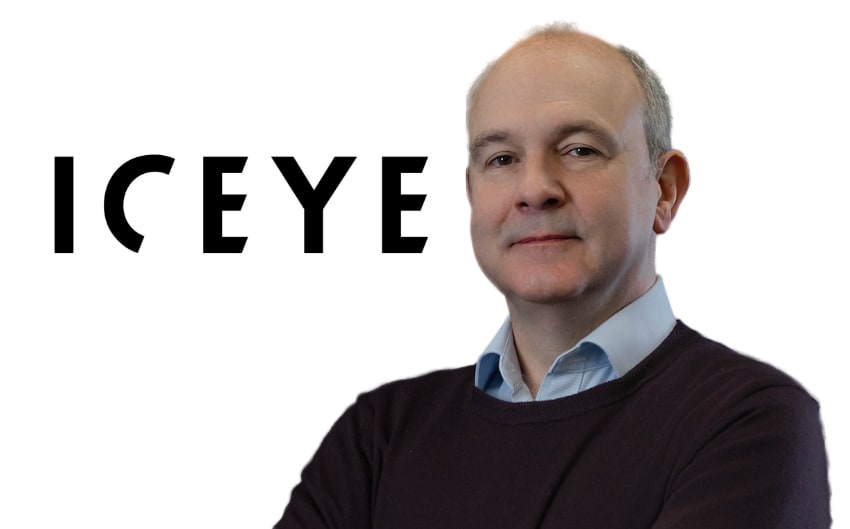How technology is increasing parametric potential: ICEYE

Ahead of the “The future of parametric triggers in ILS” panel discussion at our Artemis London 2023 conference, Stephen Lathrope, Global Head of Insurance at ICEYE outlines how technology is enhancing the data core of parametric solutions.
Parametric-based insurance structures are becoming an increasingly prominent component of the risk transfer sector. These solutions provide a highly efficient and targeted mechanism for narrowing coverage gaps in the traditional insurance market, either as a stand-alone or a complementary product to existing indemnity-based solutions.
The increase in relevance of parametric insurance is driven by several converging market factors. The insurance market is experiencing a hardening rate environment across most sectors, tighter terms and conditions, more restricted coverage options, and the withdrawal of capacity from areas with exceptionally high exposure to perils including flood and wildfire.
Alongside these market dynamics, there is increasing public-sector focus on providing protection for, and increasing the resilience of, vulnerable communities that are unable to access traditional insurance cover in the commercial marketplace.
A robust mechanism
A further factor ramping up parametric potential, and one which will be a key topic at the forthcoming “The future of parametric triggers in ILS” panel discussion at the Artemis London 2023 conference, is the quantum leap made in recent years in terms of the ability to access granular hazard and impact data – and in particular to access it at scale and speed before, during and after an event occurs.
Key advances in satellite technology are helping to open up considerable opportunities for parametric-based covers across the peril spectrum. The miniaturisation of the satellite hardware and associated cost savings and speed-of-manufacture enhancements have enabled the launch of large-scale constellations of spacecraft that can revisit any point on the globe multiple times per day.
Another advancement, and one pioneered by ICEYE, is the tandem development of miniaturised synthetic aperture radar technology integrated into its satellite constellation. Miniature SAR capabilities are a game changer when it comes to generating the comprehensive, robust, near real-time, high-resolution satellite imagery that then becomes an essential input into various triggers in parametric solutions.
Rising above the threshold
This high-resolution data capability has already been applied to a number of flood-focused parametric solutions to deliver customised triggers based on ICEYE’s Flood Insights solution. These innovative programmes are designed to target assistance to those in need, enabling better recovery outcomes in areas that fall into the protection gap through public/private partnerships.
One of the most recent examples saw ICEYE participate in the development of a multi-agency parametric pilot programme for the City of New York, including Swiss Re, Guy Carpenter and the New York City Mayor’s Office. This first-of-its-kind programme provides critical financial assistance to low- and moderate-income communities affected by flooding, while also supporting response and recovery activities through the provision of near-live flood data to facilitate emergency response efforts.
By combining ICEYE satellite imagery with ground-source data including information from NYC’s Flood Net water sensor network, flood information can be analysed rapidly even in densely populated urban areas to enable speedy payments to those impacted if a triggering event occurs.
ICEYE has also recently launched its Wildfire Insights solutions which enables near real-time building damage assessment showing which properties have been destroyed or have been undamaged by the event within 24 hours of it impacting a region. Such data capabilities, similar to flood, are stimulating the development of more effective fire-related parametric solutions – promising to be of particular value as the insurability of properties in some geographies is coming into question.
Expanding the scale
The NYC programme provides a clear example of how the development of parametric insurance solutions based on a public/private partnership underpinned by high-resolution data can provide a highly effective means of addressing the increasing vulnerability of society to climate-related perils.
The growing frequency and severity of events such as flooding and, as has been seen in recent months, wildfire events are emphasising the critical importance of developing innovative programmes that bring the public and private sectors together to enhance community resilience and ultimately reduce the protection gap.
Further, the availability of robust, comprehensive and consistent hazard and impact data at city, region, state or country level means that a much larger geographical resilience remit can be applied to such structures.
By being able to develop solutions much larger than have been seen to date, a further benefit is that such programmes are of sufficient scale to stimulate increased interest from the capital markets in investing in such ESG-driven initiatives.
A parametric tipping point?
There is little doubt that the confluence of advancements in the structuring of the parametric insurance product, developments in the insurance marketplace, and the increased threat posed by climate-related perils is creating an environment primed for the use of such innovative programmes.
These solutions ultimately create new opportunities for the insurance market and the public sector to collaborate on ground-breaking natural catastrophe initiatives in areas where the protection gap exists. The onus is now on practitioners from both sectors to capitalise on this potential.
Stephen Lathrope, Global Head of Insurance at ICEYE.
The future of parametric triggers in ILS panel discussion takes place at the Artemis London 2023 conference on 05 September at America Square. Joining Stephen on the panel will be Rowan Douglas, CEO Climate Risk and Resilience at Howden Group, Michael Bennett, Head of Derivatives & Structured Finance, World Bank Treasury, and Edern Le Roux, Head of ILS and Cat Modeling, Descartes Underwriting.
To learn more about the event and register, go to: https://www.artemis.bm/artemis-london-2023/






